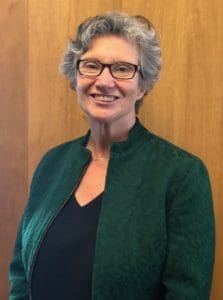 By Linda M. Jackson, Aging Action Initiative Program Director
By Linda M. Jackson, Aging Action Initiative Program Director
On most Fridays, you’ll find me with a seven month old baby named MJ, crawling on the floor, heating a bottle, pushing the jogging wheels in the park. Sometimes, if naptime falls at the right time, I’ll go to a zoom meeting; otherwise I’m in the world of seeing the world through the eyes of a delightful little one.
Last week the word ‘trajectory’ came to mind. Trajectory comes from the Latin trajectoria, which means “throw across.” The prefix tra- is short for trans-, which means “across” (think transport and transit) and the ject comes from jacere, which means “throw” (and is also the root of the word jet).
Life flings us into the world with nothing more than a heartbeat, hunger and a drive to survive. We make our way through the days and years and decades the best we can with what we’re given. Some of us are blessed with loving families and a dependable path toward a safe and secure adulthood. Others of us grow up with experiences we did not deserve – neglect, poverty, brutality, ignorance, prejudice – and which made the challenges of finding safety and security harder to establish as an adult, or elusive altogether.
When I’m with little MJ, both marvellous and mundane life experiences revisit me with a level of clarity that was not possible when I was enveloped in the busyness of a family of six, full-time work, two cats and a dog. I never expected that being a grandparent, auntie or mentor would give me, at last, the chance to experience a life trajectory not as the one embedded in the journey, but as one observing and reflecting. But here I am once a week, holding a little one and thinking of the fragility of life.
I’m on the downside of my life’s trajectory. Sometimes I want to share my thoughts about this with my own children, but our culture is prohibitively against talking about the journey toward death. I was the same with my mother – stopping her whenever she gently tried to broach the topic. I would love to ask her some questions now, 20 years after her passing. What was she remembering and reflecting on about her life choices and experiences? What was it like caring for my father who had dementia AND Parkinson’s while my brother and I were off living our young adult lives? How could I have made her last years, living with us, more comfortable? I’m listening hard to her memory these days to construct some answers.
We are all ‘walking each other home’ as Ram Dass’ book names this part of the journey. In a county with so many resources and brilliant people, it should not be a hard journey for anyone.
Older people should have at hand the same wealth of resources that young parents have about what comes next. The media has been good at portraying the exhaustion of caregiving, but it is terrible at letting families and friends know how to make the end of the trajectory as pain free and meaningful as possible. COVID exposed the loneliness of social isolation that some older adults experienced for years prior to the pandemic. But today, the focus is on helping with mental health issues post-COVID, in Marin, solely in young people. Older people who become homeless are more fragile because of a long life lived, but they remain unrecognized as a priority in Marin’s homeless program. Digital Marin, one of countless initiatives nationwide, does not, in Marin, include even one representative of older adults on the leadership committee.
Our culture has become so age-segregated that our system has lost the ability to look ahead. People who are supposed to help with this part of the trajectory should not be afraid of the path toward the end. The world post-COVID should be an AND prospect. In other words, when proposing programs for youth, staff should say AND older adults so that we can have intergenerational connections. When forming a committee, leaders should say AND be sure to include an older adult in the group. When hiring new employees, staff needs to ask about skill and expertise in equity, including ageing equity.
I look forward to working with the AAI network to make the end of our trajectories as safe, comfortable and joyful as possible. This isn’t just for the 90s and 100s among us. This is for all of us, because we’re all heading to those years. And this is especially true for older adults who are low income, of color, and/or living alone.
This is for all the little MJs in Marin. May you all have a little one or young person to inspire you!

